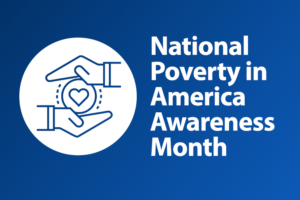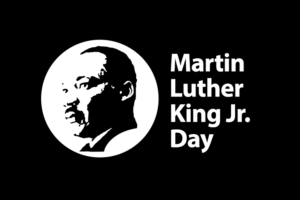Sarah Ford | July 31, 2014
Rising Expectations in a Rapidly Changing World
By Lynne D. Filderman and Steve Greenhalgh
(This post was originally featured in GuideStar’s blog.)
We live in a digital culture which give us immediate, real-time data, access to all kinds of information, and provides new ways of connecting and engaging. This culture also emphasizes a new expectation of donor engagement and new demands to show results.
At the same time, we are witnessing the evolution from check writing philanthropy to a more strategic approach with a keen focus on impact, performance and results. Our world is changing and changing fast. Much is expected of charities today and even more will be expected tomorrow.
Here, we will explore two converging trends that are shaping the rising tide of expectations faced by nonprofit organizations:
Changing Dynamics from Workplace Giving to Employee Engagement
First, the traditional static workplace giving campaign is transforming as engagement becomes the new standard. America’s Charities Snapshot 2013 highlighted these dynamic changes taking place in the corporate world around philanthropy, social responsibility and employee engagement. And digital culture is changing employee expectations around the giving experience so that it mirrors their experience outside the walls of the workplace.
Nonprofits Face Rising Expectations
The second trend that is impacting the sector is the dialogue around the Overhead Myth and the new expectations of donors around performance and impact.
When GuideStar, BBB Wise Giving Alliance and Charity Navigator launched the Overhead Myth campaign last summer, the tide in the public conversation began to change. They laid down the gauntlet and said that not only are a nonprofit’s administrative and fundraising costs not a good measure of performance but, in fact, they are poor measures of performance. They go on to ask donors to look at these factors instead – governance, transparency, leadership and results.
As we parsed the meaning this central point, we decided to dive deeper and explore what charities understand about these 4 factors. After all, if donors were being asked to pay attention to these factors in the charities they support (and we aren’t really quite sure what donors understand them to be,) then what are nonprofits’ understanding about the meaning of these and the importance placed on them?
Furthermore, what role can corporate donors play to help dispel the overhead myth, invest in charitable performance and impact, and align giving and engagement strategies with nonprofit strategies and outcomes?
America’s Charities decided to explore these issues and help drive the conversation forward around corporate giving, employee engagement and charitable performance and impact (with nonprofit organizations, companies and donors.) The findings can be found in Snapshot 2014: Rising Tide of Expectations – Corporate Giving, Employee Engagement and Impact.
Here are a few key take-aways from Snapshot 2014 and the dialogue that has ensued:
1. Charities Face a Rising Tide of Expectations to be Accountable, Transparent, and Deliver Results.
In Snapshot 2014, we found that charities, almost universally, buy into the concept of being accountable and transparent as outlined in the Overhead Myth campaign. However, there is definitely a discrepancy between their understanding of transparency and accountability and how to demonstrate the specific components of each.
82 percent of the charities that participated in Snapshot 2014 agree that accountability and transparency are important elements of good governance, but only a small percentage feels the key components that demonstrate good governance are as important as the general concept.
This is worrisome and to meet these greater expectations, charities must go beyond communicating their mission or reporting on outcomes. One of the key insights is the need to educate nonprofits on what it means to be transparent and have good governance as well as how to communicate and demonstrate these traits.
America’s Charities hosted an event at the National Press Club in April 2014 to release the findings from Snapshot 2014. At that event, several people talked about the rising expectations of nonprofit organizations and how charities and corporations must work together to deliver meaningful results. Debra Snider, Vice President of Operations at GuideStar, moderated the panel discussion and talked about being on the cusp of significant change. “We’re moving from just sharing charities’ financial documents on the Internet to really evaluating the work of nonprofits so that donations will flow to the most impactful organizations,” she emphasized.
2. Companies and Charities Live in Parallel Universes: Employee engagement desires do not always align with charity needs.
As companies are becoming more strategic in their philanthropic initiatives, so charities must create strategic plans to guide their mission and programs. Corporate giving and engagement strategies don’t always align with nonprofit strategies, resources, and needs. Charities are experiencing the growing trend of companies wanting to field teams of employees to engage with charities, whether it’s a day of service or a desire to strengthen teams by giving back. But not every charity is equipped to handle an influx of volunteers for a task that may not always be needed.
Tom Watson, author, consultant and contributor to Forbes talked about the importance of charity strategic plans at the April 24th event. His remarks can be found here.
Snapshot 2014 found that many charities are challenged to sustain their corporate relationships. When a corporate partner asks the charity if they would field a team of employee volunteers, many charities said they do it because they want to keep their corporate partner happy. One went further to say, “Which is why the homeless shelter was painted 7 times last year.”
Emily Simone, director for global community outreach for Lockheed Martin, noted in the panel discussion at the National Press Club that this made her wonder about the impact of these teams. She went on to say that the conversation between companies and their nonprofit partners needs to elevate to the strategic level if we are to have real impact.
There is a need for healthy dialogue between corporations and nonprofits to determine how best to partner and meet the desires of employees and the needs of the charity. Don’t be afraid to speak up to discuss your strategic goals. But include in the conversation what a company’s strategic goals are as well. When was the last time a company and a nonprofit discussed one another’s strategic goals as a way to leverage their partnership?
We are hopeful that as the tide shifts from singular and often insular acts of charity to more strategic year-round engagement, the dialogue between corporations and their charity partners will take a deeper dive to build a partnership that is valued, has impact and is mutually beneficial.
However, all is not lost. There are areas that align in ways that can maximize engagement and resources. Giving through the workplace is one of the best ways for nonprofits to receive unrestricted, sustainable dollars. It is a way to have definite impact in supporting a nonprofit organization.
Snapshot 2013 found that a growing number of companies are now matching employee contributions. These corporate matching gifts serve two purposes:
1. It shows their employees they are putting their money where their mouth is, and 2. It catalyzes greater employee giving and results in double the donations.
“A key driver of employee engagement is an employee’s perception of the company’s values. One growing trend is for companies to empower employees to allocate a portion of their corporate giving dollars through matching gift programs. So make sure your nonprofit’s donors are aware of these matching gift programs and are requesting the matches.” –Adam Weinger, President, Double the Donation
3. Millennials are Engaged, Inspired and Are Transforming the Giving Experience
Charities recognize that we live in a world that now demands data, metrics, stories and narratives to demonstrate impact. Snapshot 2014 notes how nonprofits are changing their communication strategies and expect to do more going forward.
Anthony Shop, Co-Founder and Chief Strategy Officer at Social Driver, suggests that nonprofits think differently when communicating with the millennial generation. He talks about living in a ‘selfie’ culture and recommends nonprofits rethink their approach and recognize they are but a character in the selfie.
The 2014 Millennial Impact Report Inspiring the Next Generation Workforce, by Achieve and Case Foundation, shows how millennials give and engage differently, than Generation X and Boomers. “When it comes to giving to and working with causes, millennials differ from previous generations in how they view the assets they can potentially donate. Millennials may still give money, time and skills, but they also view their network and voice as two very beneficial assets they can offer a cause. For millennials, all of these resources are equal in how they help a cause.”
The report also found that millennials care about issues and causes, not charities. This presents new challenges for nonprofits to actively connect with and meet these new expectations.
In summary, nonprofits are being asked to be more accountable, transparent, operate with good governance with strong leadership, and demonstrate the outcomes of their work with data, information and stories. They are also being asked to respond to the new corporate culture of employee engagement and fit within corporate strategies.
It’s imperative that corporate and other institutional donors invest their resources to help nonprofits meet the rising tide of expectations. And it is equally important for nonprofits to catalyze strategic discussions with their corporate partners.
With the immediacy of information, data and stories, the intersection of companies, employees and nonprofits is changing and changing fast. It’s not just millennials who are impatient to see results.
Get Resources and Insights Straight To Your Inbox
Explore More Articles
Open Position: Customer Service Coordinator (Remote-Part Time)
Position Title: Customer Service Coordinator (Remote – Part Time) Department: Charitable Funds Management Solutions We are a non-profit charitable organization looking for skilled individuals who…
Read ArticleGet Resources and Insights Straight To Your Inbox
Receive our monthly/bi-monthly newsletter filled with information about causes, nonprofit impact, and topics important for corporate social responsibility and employee engagement professionals, including disaster response, workplace giving, matching gifts, employee assistance funds, volunteering, scholarship award program management, grantmaking, and other philanthropic initiatives.





